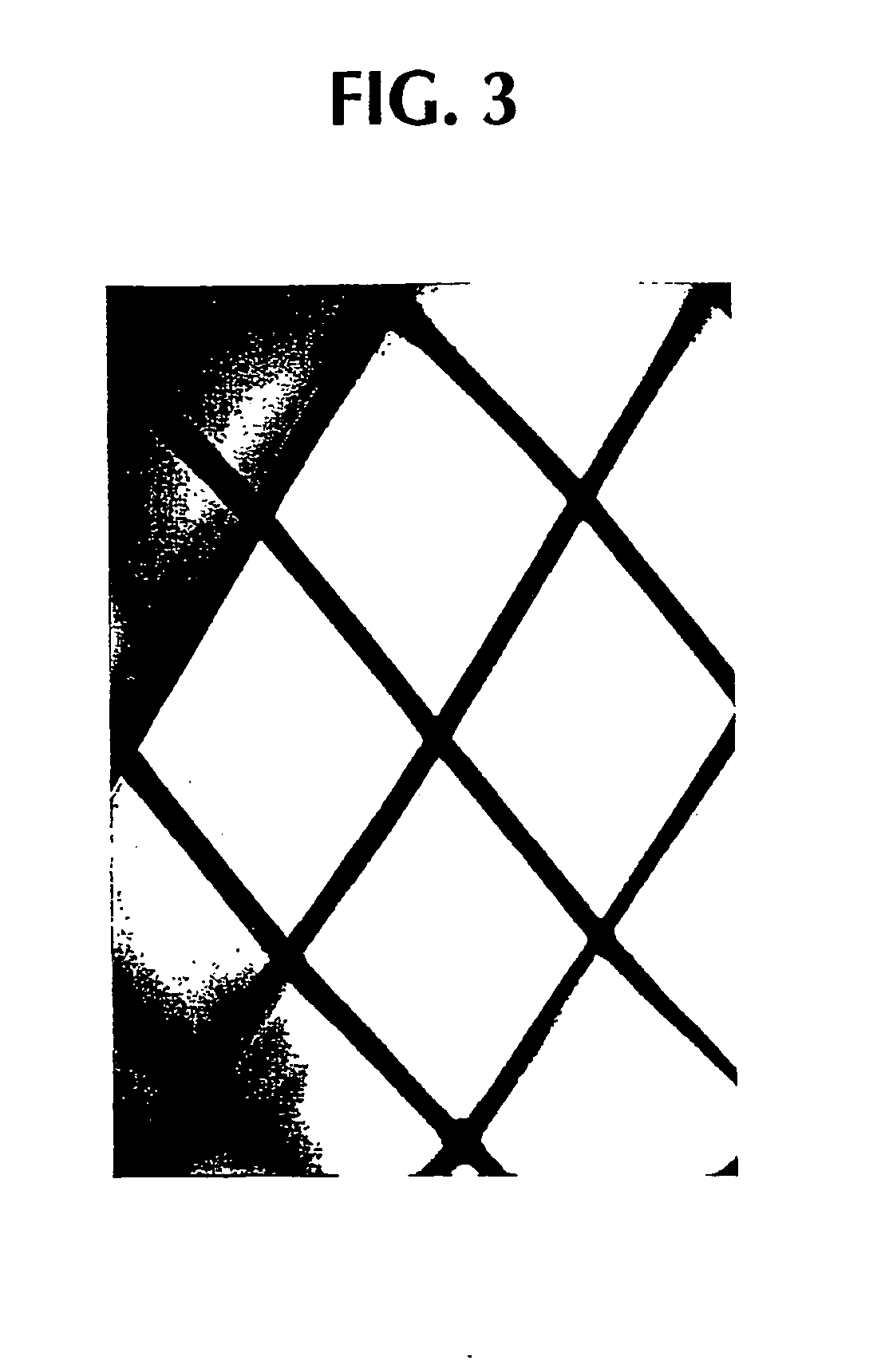Drug release coated stent
a technology of stents and coatings, applied in the field of expandable stent prostheses for therapeutic purposes, can solve the problems of reducing the cross-sectional area available for flow through the stent, reducing the relative amount of open space in the structure, and reducing the mechanical properties of metal stents of similar thickness and weaves. , to achieve the effect of axial deformation
- Summary
- Abstract
- Description
- Claims
- Application Information
AI Technical Summary
Benefits of technology
Problems solved by technology
Method used
Image
Examples
Embodiment Construction
[0060] A type of stent device of one class designed to be utilized in combination with coatings in the present invention is shown diagrammatically in a side view and an end view, respectively contained in FIGS. 1A and 1B. FIG. 1A shows a section of a generally cylindrical tubular body 10 having a mantle surface formed by a number of individual thread elements 12, 14 and 13, 15, etc. of these elements, elements 12, 14, etc. extend generally in an helix configuration axially displaced in relation to each other but having center line 16 of the body 10 as a common axis. The other elements 13, 15, likewise axially displaced, extend in helix configuration in the opposite direction, the elements extending in the two directions crossing each other in the manner indicated in FIG. 1A. A tubular member so concerned and so constructed can be designed to be any convenient diameter, it being remembered that the larger the desired diameter, the larger the number of filaments of a given wire diamet...
PUM
| Property | Measurement | Unit |
|---|---|---|
| time | aaaaa | aaaaa |
| thickness | aaaaa | aaaaa |
| thickness | aaaaa | aaaaa |
Abstract
Description
Claims
Application Information
 Login to View More
Login to View More - R&D
- Intellectual Property
- Life Sciences
- Materials
- Tech Scout
- Unparalleled Data Quality
- Higher Quality Content
- 60% Fewer Hallucinations
Browse by: Latest US Patents, China's latest patents, Technical Efficacy Thesaurus, Application Domain, Technology Topic, Popular Technical Reports.
© 2025 PatSnap. All rights reserved.Legal|Privacy policy|Modern Slavery Act Transparency Statement|Sitemap|About US| Contact US: help@patsnap.com



